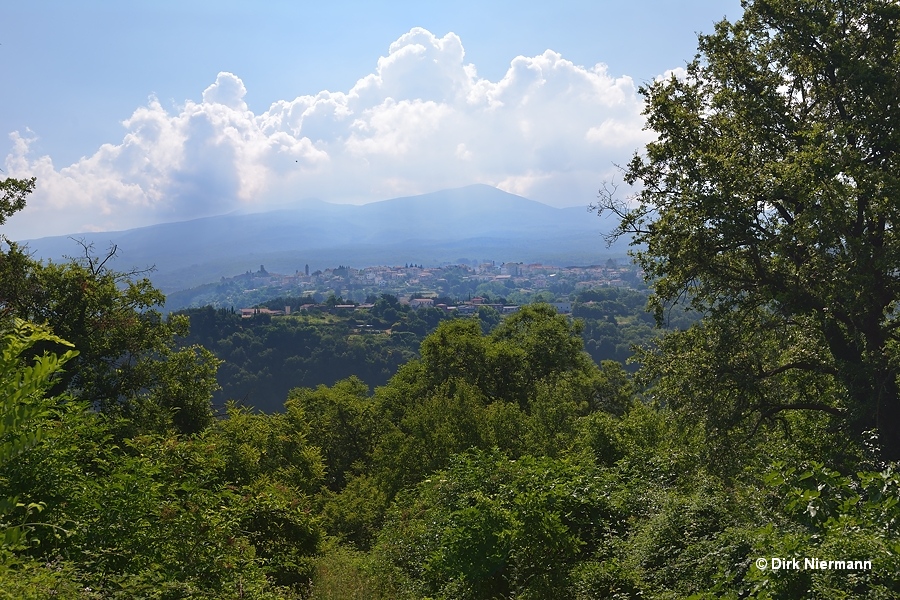Toscana (Tuscany)
Close to Italian's west coast, spanning from southern Toscana through to Lazio, a series of now extinct volcanoes is lined up like pearls on a chain. Largely unknown to a wider public outside of Italy, Amiata, Vulsini, Cimino, Vico, Sabatini, Colli Albani, and Roccamonfina have been the architects of fascinating landscapes such as the Colline Metallifere (metal-bearing hills), the Maremma, and the mountainous regions of Viterbo. Up until 2019 Larderello, west of Siena in southern Toscana, was believed to be the northernmost member of the volcanic cluster because a phreatic explosion blew out a crater at this site in the year 1282. But since no emission of lava could be verified, it has been deleted form the list of volcanoes. The explosion crater is now filled with water and known as Lago Vecchienna. Larderello has been one of the first regions of the world where geothermal energy was exploited to support industry. Geothermal features, primarily fumaroles, are to be found around Larderello in the Valle del Diavolo (Devil's Valley) and at its margin, near Sasso Pisano and Monterotondo Marittima. However, in terms of hot springs far more interesting is its southern neighbor, Monte Amiata.

The lava dome complex of Monte Amiata erupted for the last time in the late Pleistocene, 231,000 years ago. Though it is considered to be extinct now, there is enough volcanic heat left to originate hot spring activity in the surrounding areas, even at greater distances in Saturnia or in Petriolo. Almost all of these springs come with a rich cultural history, dating back to Etruscan and Roman times. On the other hand, a long history also means a long time of utilization and several changes by building works. At Terme di Chianciano, Fonteverde in San Casciano Dei Bagni, or Bagno Vignoni the natural setting has been completely built over. While Bagno Vignoni has preserved much of its medieval charm, the others are modern spa buildings. The same is true for the spas at Saturnia, Bagni San Filippo, and Petriolo. But there you can find something special: besides the ordinary spas some recognizable remains of natural hot springs or travertine terraces show up. All of them are attracting a huge number of bathers.
It’s not my intention to promote the spa industry or soaking in natural pools, which from my point of view is overrated and has led to substantial damages to breathtaking travertine terraces, terracettes, sinter pools, and stalactites. Therefore, I skip here all speculations about real or alleged curative or cosmetic effects of thermal waters. One should be aware, though, that scientists found Legionella bacteria (responsible for Legionnaires’ disease) in all investigated natural thermal waters in Tuscany. Temperatures of less than 60 °C (140 °F) and near neutral pH (balanced acid/base content) offer an ideal breeding ground for those bacteria, plus numerous small waterfalls are forming aerosols that permit the microbes to enter the human body. For reference see A. Lo Nostro et al., Legionella contamination in hot water systems of hospitals, nursing homes, hotels, factories and spas in Tuscany-Italy, Italian Journal of Public Health, Volume 8, Number 1, 2011.